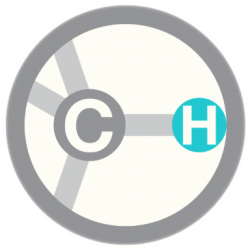Authors: S E Hemby, C Co, D Reboussin, H M Davies, S I Dworkin and J E Smith
J. Pharmacol. Exp. Therap.,
1995, 273, 2, 656-666
2 beta-propanoyl-3 beta-(4-tolyl) tropane (PTT) is a novel tropane that has been shown to be approximately 20 times more potent than cocaine in binding to the 3 beta-[4′-iodophenyl] tropane-2 beta-carboxylic acid methyl ester (RTI-55) site on the dopamine transporter, an effect partially attributable to the methyl constituent at the para position on the phenyl ring. In addition, PTT lacks the ester linkage of cocaine, thus increasing its metabolic stability. This study was undertaken to compare the quantitative and temporal effects of PTT and cocaine on in vivo neurochemical measures and motor behavior. The effects of PTT (0.3, 1.0 and 3.0 mg/kg; i.p.) and cocaine HCl (3.0, 10.0, & 30.0 mg/kg; i.p.) on nucleus accumbens extracellular dopamine concentrations [DA]e were evaluated using in vivo microdialysis. Locomotor activity and stereotypic behaviors were also assessed. PTT and cocaine increased [DA]e and total locomotor activity in a dose-dependent manner with PTT approximately 30 times more potent than cocaine. The relationship between [DA]e and locomotor activity was linear over the test session for cocaine, but not for PTT. In a subsequent experiment, pronounced stereotypic behaviors were evident in rats administered cocaine (10.0 and 30.0 mg/kg) or PTT (3.0 mg/kg). The stereotypy elicited by PTT was longer in duration and greater in intensity than that elicited by the highest dose of cocaine. These results extend previously published data by demonstrating similar in vivo potencies for PTT on nucleus accumbens [DA]e and locomotor activity. However, these data do not support the hypothesis that the time course of increased nucleus accumbens [DA]e and stimulated locomotor activity are related.

